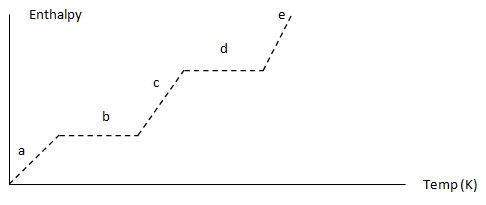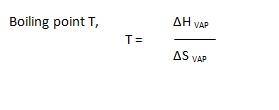how to find boiling point
Boiling Point – Definition
Boiling point of a substance could be defined as the temperature in which a substance changes its physical state from liquid to vapor. From the substances around us, we should be able to understand that which are already at the gaseous state have very low boiling points and the boiling points increase if a substance is a liquid or solid.
What is Boiling Point?
We know that when a substance is in the liquid form the molecules have interactions which hold them together. As we increase the temperature, we are providing heat energy which is converted to the kinetic energy of the molecules. This is indicated by the boiling where we observe a formation of bubbles. If the kinetic energy is enough to overcome the interactions between molecules in the solution, those molecules may escape from the solution and move into the gas phase. The temperature at this time is referred to as the boiling point and the pressure of the surrounding at this time is equal to the vapor pressure of the gaseous substance.
Boiling point changes according to the type of intermolecular interactions a substance has. The stronger the interactions, e.g. Hydrogen bonds, ionic bonds higher, the boiling point. If the interactions are weak, the boiling point is low. E.g. Vanderwaal's forces.
Normal Boiling Point
It has been observed that boiling point is a function of pressure (changes with pressure). The normal boiling point is the temperature at which a substance changes its physical state from liquid to vapor under the atmospheric pressure (Usually 1 atm).
How to Find Boiling Point of a substance
There are many ways to find the boiling point of a substance.
Using Temperature and Enthalpy Graph to Find Boiling Point

This is how heat changes according to temperature.
a. Solid increasing temperature
b. Solid to liquid phase transition (note that temperature is constant = Melting point)
c. Liquid increasing temperature
d. Liquid to vapor phase transition (note that temperature is constant = Boiling point)
e. Vapor increasing temperature
From the graph, we can identify the phase transition from liquid to vapor and take the corresponding temperature as boiling point.
Using Vapor Pressure and Temperature Graph to Find Boiling Point
For each substance, we can find its vapor pressure at several temperatures and draw a graph. Vapor pressures could be obtained experimentally.

By this, we can find boiling points of substance a,b or c at any given pressure. Because,
Boiling point = Temperature at which the vapor pressure = External pressure of the surrounding.
The horizontal dashed line show how boiling points of the substance vary at atmospheric temperature. Looking at the variation, we could say Strength of Molecular interactions: a < b < c
We could also see that lowering the pressure, substances boil at lower temperatures. For instance, if we take water, at 101.3 kPa (1 atm) it boils at 100⁰C but at 50kPa water boils at 78 ⁰C.
Finding Boiling Point, if Enthalpy and Entropy Change of Vaporization are known


You May Also Like These
how to find boiling point
Source: https://pediaa.com/how-to-find-boiling-point/
Posted by: foltzabsetiley.blogspot.com


0 Response to "how to find boiling point"
Post a Comment